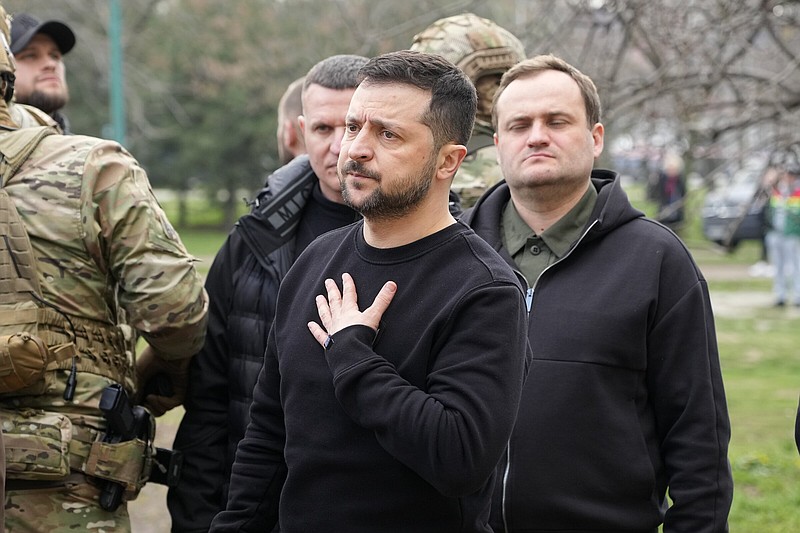ZAPORIZHZHIA, Ukraine -- The U.N.'s atomic energy chief warned during a meeting Monday with Ukrainian President Volodymyr Zelenskyy that the perilous situation at Europe's largest nuclear plant "isn't getting any better" as relentless fighting in the area keeps the facility at risk of a disaster.
The Zaporizhzhia nuclear power plant's six reactors are in shutdown and it is receiving the electricity it needs to prevent a reactor meltdown through just one remaining power line. It has on occasion had to switch to emergency diesel generators to power its essential cooling systems.
In the meeting with Zelenskyy in southern Ukraine covered exclusively by The Associated Press, International Atomic Energy Agency Director-General Rafael Mariano Grossi said the situation at the plant remains tense because of the heavy military presence around it and a blackout that recently struck the facility, something that has occurred repeatedly since Russian forces took it over last year.
Grossi plans to visit the plant this week for the second time since Russia's invasion 13 months ago. The Vienna-based agency has staff permanently deployed at the plant since Grossi's last visit in September.
Earlier this month, fighting interrupted the power supply to the plant for half a day, forcing staff to activate backup generators.
Grossi had expressed alarm at that development.
"Each time we are rolling a dice," he told his agency at the time. "And if we allow this to continue time after time, then one day our luck will run out."
Grossi and Zelenskyy met in the the city of Zaporizhzhia, which is in Ukrainian-held territory about 30 miles northeast of the nuclear plant with the same name.
The IAEA said in January that it was placing teams of experts at all four of Ukraine's nuclear power plants to reduce the risk of accidents, including the now-closed Chernobyl plant, where a deadly nuclear accident in 1986 spread fallout over much of Europe.
Grossi emphasized that his seventh trip to Ukraine underlined his commitment and support for "as long as it takes."
Also attending the meeting were other IAEA officials; the head of the presidential office, Andriy Yermak; and the head of nuclear operator Energoatom, Petro Kotin.
While in Zaporizhzhia, Zelenskyy also inspected military positions in the partially occupied province and awarded soldiers military honors. He visited wounded soldiers at a hospital and an apartment building that Kyiv claims was hit by a missile Wednesday, killing at least one person and injuring more than 30.
Residents were still shocked by the experience.
"It's terrifying. I cannot find the words to tell you," said Hanna Budkova, 39, who was in a busy playground in front of the apartment block with her nearly 2-year-old daughter. "I'm afraid to go anywhere near the windows."
Zelenskyy later visited Nikopol, a frequently shelled city across the Dnieper River from the nuclear power plant, according to the presidential office.
Elsewhere, two people were killed and 29 wounded Monday when Russian forces shelled the city of Sloviansk in the partially occupied eastern Donetsk region, officials said.
Video footage of the aftermath showed damaged residential buildings, debris in the streets and vehicles on fire. Zelenskyy described the attack as "terrorism."
Russia has denied targeting residential areas even though artillery and rocket strikes have hit Ukrainian apartment buildings and civilian infrastructure daily during the war.
The Sloviansk attack followed a typical pattern of long-range shelling adopted by the Kremlin's forces, especially in recent months as the fighting became deadlocked during the winter.
